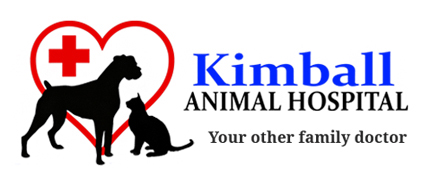Library
-
The most common cause of hip dislocation is blunt force trauma such as a fall or an automobile injury. Most dogs with a hip dislocation will have severe hind limb lameness and pain and may not be able to put any weight on the affected limb. A diagnostic radiograph will show the direction of dislocation and whether a fracture of any part of the hip joint has occurred. In many cases, it is possible to replace the femoral head in the acetabulum by manipulation under general anesthesia. If the femoral head has been successfully replaced and the correct post-operative treatment has been adhered to, it is unlikely that the hip will dislocate again.
-
Hyperthyroidism is a common condition in older cats caused by excess thyroid hormone release resulting in an increased metabolic state. Hyperthyroidism can cause weight loss despite a good appetite, increased water consumption and urination, vomiting, diarrhea, cardiomyopathy, and hypertension. Diagnosis is made by testing blood thyroid hormone levels. Several successful treatment options exist, including medication, thyroidectomy, radioactive iodine, and a prescription diet. The prognosis with treatment is generally good.
-
The iliopsoas is an important core muscle. Injury can occur due to trauma, but it is usually caused by chronic stress. Signs that your dog has a painful iliopsoas can include reduced performance (if a sporting dog), very subtle weight-shifting away from the affected side when standing, or an obvious limp. The initial treatment for acute iliopsoas injuries is activity restriction and pain control for 10-14 days. Rehabilitation therapy can also help.
-
Cats are curious by nature, which can lead them into trouble, especially when they ingest items not meant to be eaten, such as thread, wool, paper, rubber bands, plant materials, and small toys. While some will pass through the digestive tract, some foreign bodies can cause serious problems. This handout explains foreign bodies in the intestinal tracts of cats and reviews clinical signs, diagnostic tests, treatment, and the prognosis of these situations.
-
Foreign body obstruction is a common and potentially life-threatening condition in veterinary practice. Some foreign bodies pass through the intestinal tract, but if an obstruction occurs, surgical removal of the blocked object is the only treatment.
-
A hernia occurs when a body part or internal organ protrudes through the wall of muscle or tissue meant to contain it. In the case of an inguinal hernia, these internal organs or structures have managed to make their way through the inguinal ring (an opening in the abdominal wall near the pelvis) to protrude into the groin area. The condition itself can be broadly classified as either acquired or congenital. In general, it is best to surgically repair an inguinal hernia at the time of diagnosis, as delaying can result in a more complicated and difficult procedure.
-
Otitis interna is a serious condition that can cause significant signs in your cat, including drooling from the side of the mouth, difficulty eating, inability to blink, and drooping eyelids, lips, and nostrils on the affected side. Treatment may involve long-term medications if the underlying cause can be identified, such as bacterial or fungal infection. Less commonly, surgery may be needed. Many cats will respond to treatment and recover well.
-
Otitis interna is a serious condition that can cause significant signs in your dog, including reluctance to eat, head tilt, alteration in balance, and reduced hearing on the affected side. Treatment could involve long-term medication if the specific cause can be identified, such as bacterial or fungal infection. Less commonly, surgery may be needed. Many dogs will respond to treatment and recover well.
-
An intussusception is a condition where part of the intestine slides into another part of the gastrointestinal tract. It causes signs similar to intestinal obstruction, including poor appetite and vomiting. Some cases can be life-threatening. Although some non-surgical techniques may correct the problem, most cases require surgery and intensive care for a good outcome.
-
A joint luxation is a dislocation or complete separation between the bones that normally move back and forth to form a joint. Subluxation refers to a partial separation of the joint. The most commonly subluxated joint in cats is the hip, although any joint can be affected. Your veterinarian may suspect a joint subluxation based on a history of trauma and physical examination findings such as pain and limping. A radiograph is necessary to definitively diagnose a joint subluxation. In many cases, the joint can be reduced or replaced to its original orientation by a procedure called a closed reduction, with a good prognosis if treated immediately. Surgery correction, however, may be needed.

